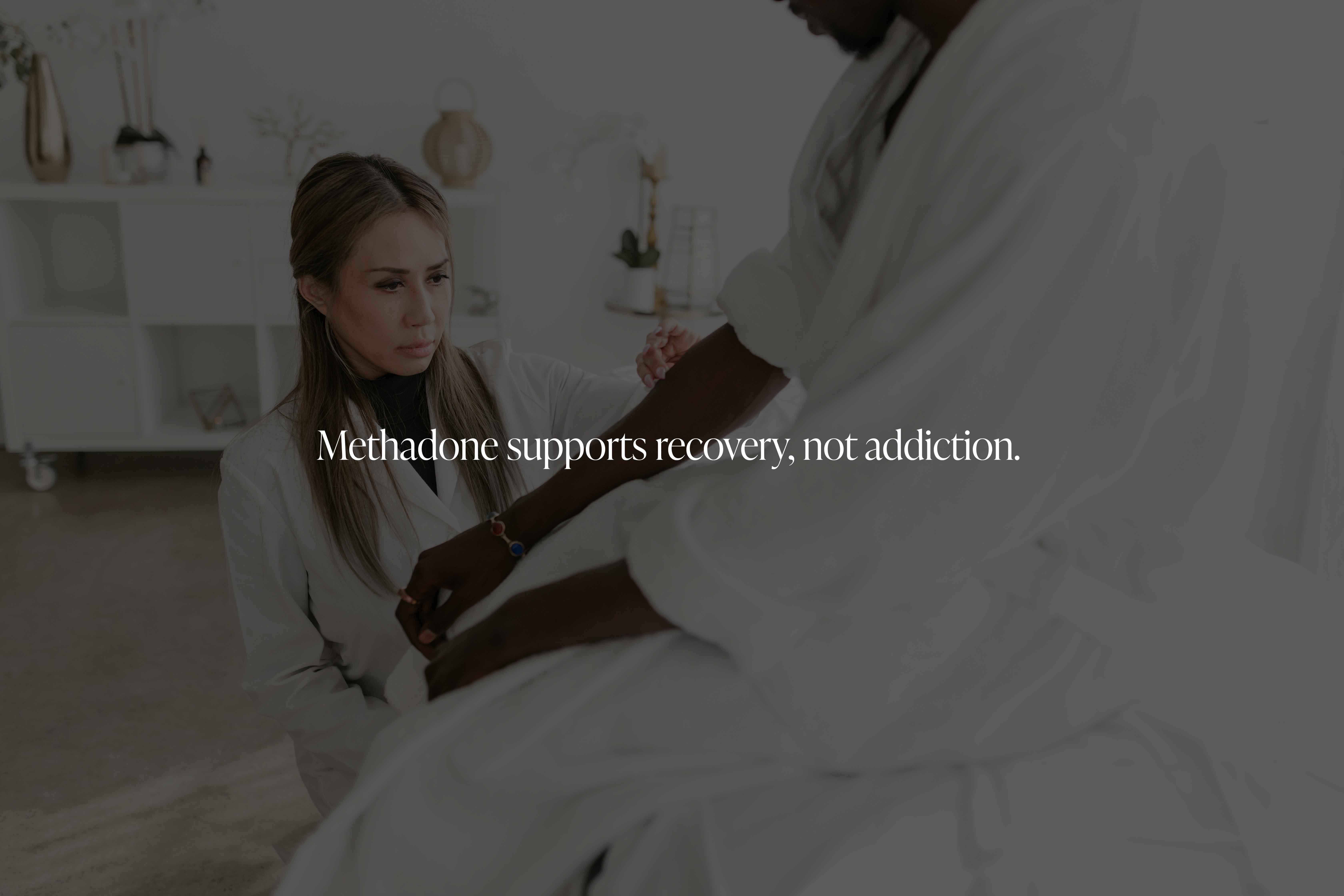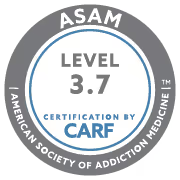Table of Contents
Methadone is a long-acting synthetic opioid used in addiction recovery to reduce withdrawal symptoms, curb cravings, and support long-term recovery from opioid use disorder (OUD). It is most commonly used as part of medication-assisted treatment (MAT), a comprehensive program combining behavioral therapy with medications to treat substance use disorders.
Approved by the FDA in the 1970s, methadone is considered a safe and effective tool when administered under medical supervision.

What Is Methadone?
Methadone is a full opioid agonist, which means it activates opioid receptors in the brain but in a controlled and sustained way. Unlike short-acting opioids such as heroin or oxycodone, methadone doesn’t create intense highs when taken as prescribed. Instead, it:
- Reduces drug cravings
- Prevents withdrawal symptoms
- Blocks the euphoric effects of other opioids
These properties allow patients to stabilize without the highs and lows of illicit drug use, enabling them to focus on therapy, relationships, and rebuilding their lives.

How Is Methadone Administered?
Methadone is typically taken once daily in liquid or tablet form at licensed opioid treatment programs (OTPs). The dose is carefully calibrated to meet the individual’s needs. Initial doses usually range from 20 to 30 mg, and maintenance doses are adjusted to eliminate cravings and withdrawal without producing sedation.
Daily supervised dosing may continue for weeks or months, with some patients eventually transitioning to take-home privileges as they progress in treatment.
What Is Methadone Used For in Recovery?
Methadone is primarily used to treat:
- Heroin addiction
- Prescription opioid addiction (oxycodone, hydrocodone, fentanyl, etc.)
- Chronic relapse cases where other methods have failed
It helps break the cycle of addiction by reducing the compulsion to use illicit opioids. Patients on methadone often report improved physical health, reduced criminal activity, and better social functioning.
To explore individualized options, visit our methadone addiction treatment page.
Is Methadone Safe?
When taken as prescribed in a clinical setting, methadone is safe and well tolerated. However, like all opioids, it can cause side effects and must be taken under strict medical supervision. Common side effects include:
- Drowsiness
- Constipation
- Sweating
- Weight gain
Methadone can be dangerous if misused—especially when combined with other sedatives like benzodiazepines or alcohol. Overdose risk increases when doses are not medically supervised.
How Long Do People Stay on Methadone?
There is no fixed timeline for methadone treatment. Some people remain on it for several months, while others continue for years. The goal is not to rush the tapering process but to stabilize the person long enough to develop sustainable recovery skills.
Decisions about reducing or stopping methadone should always be made in collaboration with medical professionals to avoid withdrawal or relapse.
Why Opioid Relapse Often Requires Medication Support
Recovering from opioid use without medication support results in high relapse rates. Methadone, along with options like buprenorphine, significantly lowers the chance of relapse by managing the brain’s chemical dependency. Learn more in what are opioids and how do they affect the body.
How Narcan Differs from Methadone
Narcan (naloxone) is used in emergencies to reverse opioid overdoses. It acts within minutes but has short-lasting effects. Methadone, in contrast, is a long-term maintenance treatment. For more on emergency overdose response, see how does Narcan work in overdose situations.
Preventing Relapse During Methadone Tapering
Tapering off methadone must be done slowly. Abrupt reduction can lead to severe withdrawal symptoms and relapse. Patients benefit from relapse prevention strategies including therapy and support networks. Read what does it mean to relapse and how can you prevent it to understand the warning signs and tools for staying on track.
Methadone and Benzodiazepines: A Dangerous Combination
Using methadone alongside benzodiazepines like Xanax increases the risk of respiratory depression and overdose. This combination must be avoided or closely managed. See what are benzodiazepines and why are they prescribed for a detailed explanation.












